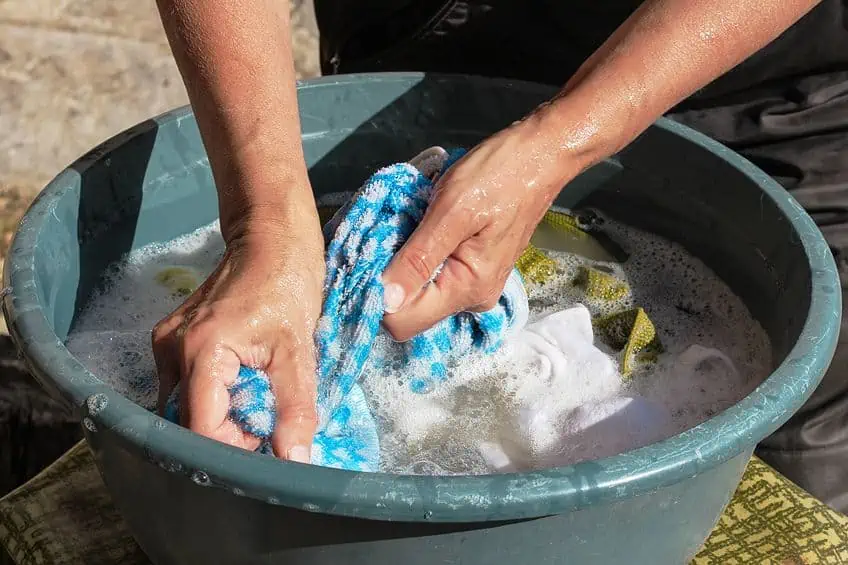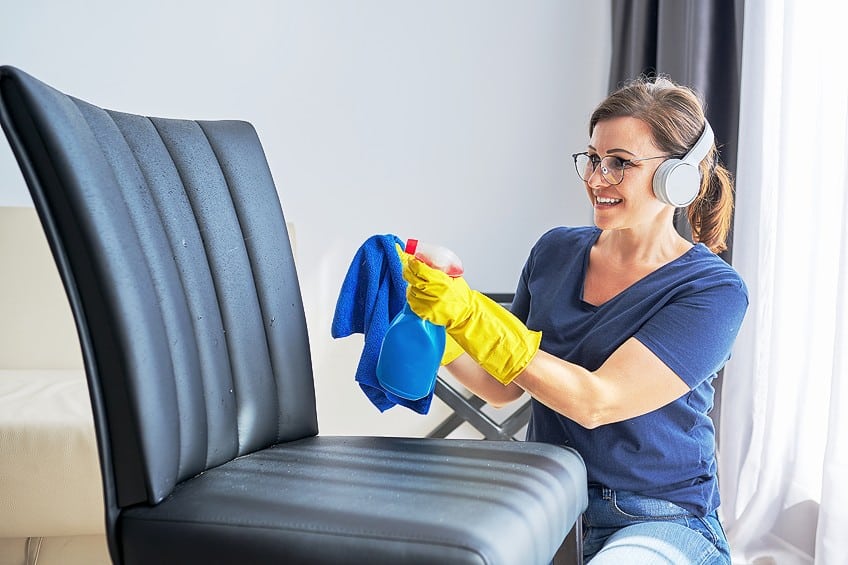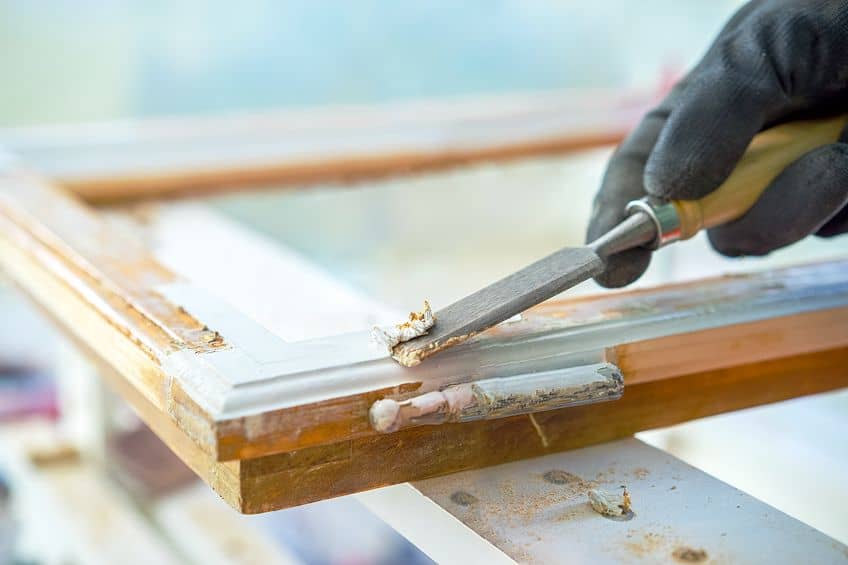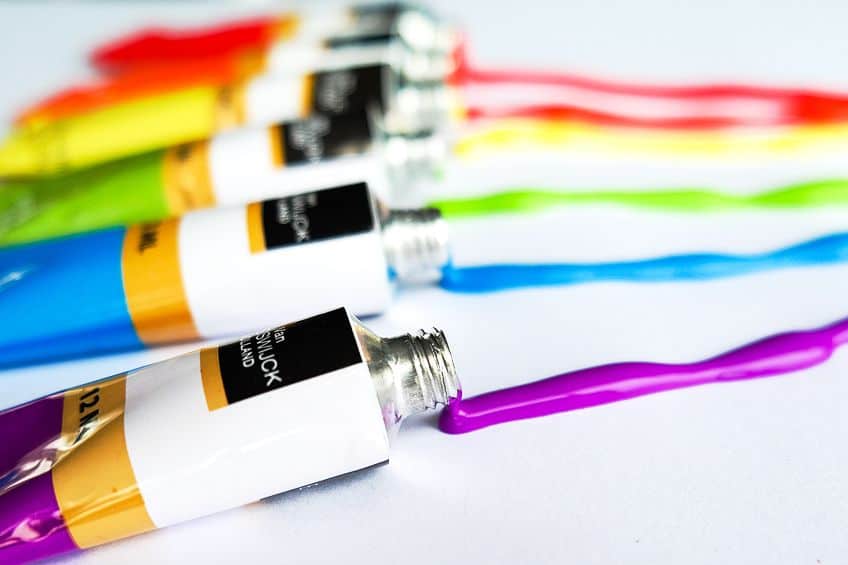Is Acrylic Paint Washable? – Learn About Washable Acrylic Paint
This post may contain affiliate links. We may earn a small commission from purchases made through them, at no additional cost to you.
Acrylic paint is a broadly-used art painting medium that is popular because it boasts being water-soluble, quick-drying, long-lasting, versatile, non-flammable, and non-toxic. However, when artists accidentally get paint onto surfaces or clothes, it can be difficult to remove. This leaves many to wonder, “is acrylic paint washable?”. Acrylic paint’s ability to be used on a multitude of surfaces is what makes it difficult to wash off but luckily, there are many techniques that can be used to remove the paint from skin, fabric, plastic, and much more.
Table of Contents
Are Acrylic Paints Washable?
Washable can refer to both the ease that it can be removed using soap and water, as well as its resistance to being washed. To avoid confusion, we will be referring to the latter when talking about acrylic paints washable. One of the key characteristics of acrylic paint is its water solubility when wet. This allows it to be mixed into various consistencies and gives the paint much of its versatility. Once these paints have dried, however, they become water-resistant and develop their trademark longevity. While this adds to the longevity of the paints, it makes it more difficult to remove. Wet acrylic paints can be removed with some soap and water without much hassle. The type of surface is a big determinant of how easy it is to wash out acrylic paint.
A porous surface, or one that has been prepared for painting, allows the acrylic paint to soak into the material. This makes it much harder to completely wash out the paint and might require a solvent, detergent, or even remain permanently stained.
Does Acrylic Paint Wash Off Skin and Hair?
If you work with acrylic paints, you are bound to get some on your skin and hair. Removing acrylic paint from your skin and hair after every session is important to avoid staining your skin or damaging your hair. Acrylic paint should be washed off immediately if you have a cut or other injury on your skin to prevent harmful chemicals from entering your body.

Removing Acrylic Paint from Your Skin
There are many easy methods for washing acrylic paints off your skin. The easiest method is to use warm water and a mild hand soap. Simply, rinse the area of your skin with warm water and then use the soap to lather the area. Once all the paint has lifted, rinse off the soap and pat dry. This method works well on paint that is still wet. Baby oil is another option for removing acrylic paint from your skin, especially once it has already dried. Apply a few drops of the baby oil to dry skin and use your fingertips or cotton ball to rub the area and break down the paint. For larger areas, you can apply the oil to a dry cloth and use it to gently scrub away the paint. You can then wash the area with soap and water to remove any remaining oily residue.
Lotions containing oils, or even vegetable oil, can also be used in a pinch to remove acrylic paint, however, it is less effective than using pure baby oil.

Really stubborn stains that do not come off using soap or baby oil can be cleaned using rubbing alcohol. Rubbing alcohol, or Isopropyl alcohol, dissolves the binders in the acrylic paint making it easier to remove. Dip a cotton ball or cloth into the alcohol and gently rub the area until the paint is removed. Rubbing alcohol can be harsher on skin compared to other methods and should not be used near the eyes, mouth, or broken skin. For a gentler option, you can also use hand sanitizer to dissolve acrylic paint off skin. While rubbing alcohol is safe for your skin, other solvents such as turpentine or mineral spirits should not be used to remove acrylic paint as they can be toxic.
Removing Acrylic Paint from Your Hair
Washing acrylic paint out of hair is generally an easy process, especially while it is still wet. In almost all cases it can be removed using soap and water or simply washing your hair as you usually would. If the paint has been allowed to dry, it will cause your hair to become stiff, and you may need to keep your hair wet for half an hour to soften the paint before washing. Curly hair is generally more porous than straight hair, this means that more paint gets absorbed into the hair strand and makes it harder to remove the paint. You may need to soak your hair or use a clarifying shampoo to ensure that all the paint washes out. For really stubborn stains or if a large amount of paint has been allowed to dry in your hair, an oil such as baby oil or olive oil can be used to soften the paint. Apply a liberal amount of the oil onto your hair, allow it to sit for two to three minutes, and then massage the area with your fingers to break down the paint. Wash your hair as you usually would to remove the oil residue.
Avoid using alcohols or solvents such as acetone and turpentine as these will damage your hair. If you are planning on temporarily dying your hair, it is better to use a product such as a temporary hair paint, as these are made to wash out without damaging your hair.
Does Acrylic Paint Wash Off Fabrics?
Washing acrylic paints out of fabrics can be difficult depending on the material, however, there are a variety of methods that can be used to remove wet and dry paint. Working carefully while removing the paint is important so that you do not damage the fabric.

Removing Acrylic Paint from Clothing
There are several methods for removing acrylic paint from various fabrics and acrylic paint is highly washable off of clothing as long as the paint is still wet. Once it dries, however, the paint becomes much more challenging to remove and the fabric may be irreversibly stained. While the paint is not fully dry, you can simply soak your clothing in hot water for 30 minutes until the paint starts to peel or lift off. Wash the clothing as usual. For more stubborn stains or paint that has dried slightly, rubbing alcohol can be used. Add enough alcohol to cover the stain and then use a rough cloth or old screwdriver to scrub the area. It is important to spot-test the alcohol on a hidden section of the garment first to ensure that it will not damage the fibers.
This method is the best for removing acrylic paint from jeans and denim fabrics.
A solution made of equal parts of white vinegar and ammonia and a small amount of salt can also be used to lift more stubborn stains. Apply the solution to the stain using a cloth or sponge and allow it to sit for 10 to 15 minutes. Rinse out thoroughly with warm water and wash as usual. Vinegar can also be used by itself for more delicate fabrics. Be sure to check clothing labels before attempting to wash out acrylic paint to ensure that you do not damage the garment.
Removing Acrylic Paint from Fabric and Leather
Accidental spills on furniture or shoes can be daunting, however, like with clothing, acrylic paint is washable on other fabrics and leathers. Many of the same methods used on clothing will also work on other fabrics and leathers. A mixture of equal parts mild cleaning detergent, rubbing alcohol, and water can be used to remove paint from your fabric furniture. As it is difficult to rinse large pieces of furniture, apply the mixture to the area with a brush or rough cloth to prevent it from becoming soaked. Work the solution gently into the area until the paint starts to lift. Once the paint comes away, go over the area again with a cloth damp with water to wipe away any excess solution and paint.

If you are working with more delicate fabrics such as wool, silk, suede, or leather that has been sealed, then it is better to forego the detergent and just use equal parts rubbing alcohol and water to wash off the acrylic paint. Dab a cotton ball or soft cloth in the solution and gently wipe away the paint. Do not use solvents when working with these materials as they can damage delicate fibers or dissolve the protective layer on leathers.
Removing Acrylic Paint from Canvas
You can even wash acrylic paint out of canvas using the proper methods. The easiest way is to use rubbing alcohol and water. Start by soaking a towel with a 1:1 warm water and alcohol solution and covering the canvas with the towel for half an hour. After the paint has softened, use the towel to wipe away the paint, and then use another towel soaked in warm water to remove any residual paint and alcohol. This will ensure that any new paint laid on top will not be impacted by the cleaning process. If the paint has been left to dry you may need to soak the canvas in the solution to soften the paint and allow it to be scrapped off.
If you have made a mistake in your painting, it is not recommended to wash off the acrylic paint using these methods. Rather, allow the paint to dry and then scrape it off using a painting knife.
Does Acrylic Paint Wash Off Other Household Surfaces?
The methods and ease of washing acrylic paint off household surfaces such as glass, wood, cement, and walls differ for each material. Many of these methods involve sanding down the painted surface. Protective clothing such as masks and goggles should be worn as some acrylic paints contain harmful compounds that can become airborne when sanded.
Removing Acrylic Paint from Wooden Floors and Furniture
Washing acrylic paint off wood is relatively easy if the paint is still wet. Wood is a very durable material, which gives you a variety of options for removing acrylic paint. For small pieces of wood, you can simply soak the wood in warm water and soap, and then scrape off the paint once it lifts. This method works well for paint that is still wet. If you are wanting to remove acrylic paint from a large area of wood, an inexpensive heat gun is the best tool to use. Hovering a heat gun a few inches above the paint will cause it to peel off the wood, where it can be easily scraped off. This method may also work for paint that has been allowed to dry depending on how long it has been left on the wood.
However, wood is porous, this means that if the acrylic paint is allowed to dry it will be absorbed into the wood and stain it. If this happens it will be almost impossible to remove it completely.
Removing Acrylic Paint from Walls and Glass
The reason you have for washing acrylic paint off your wall will determine the approach that you take. Removing an accidental spill on your walls is much easier while the paint is still wet, as you can simply wipe the paint off with soapy water. Once the paint has dried it is much harder to remove the paint without damaging any underlying paint. Using a cotton ball dipped in diluted rubbing alcohol, you can carefully dab the paint off. Some underlying paint may still lift off and will need to be touched up afterwards. If you want to wash existing acrylic paint off a wall entirely then the process is much easier. Simply sand the area down using 40-grit sandpaper or a hand sander until the paint gradually gets removed. Afterwards, wipe your wall down with a damp cloth to remove any remaining dust and to prepare it for any later painting jobs.
If the wall is highly textured, it will be more challenging to remove the paint. You may need to sand certain areas by hand or try using alcohol to dissolve it.

Thanks to its non-porous surface, glass is one of the easiest materials to wash acrylic paint off. Start by softening the paint with warm water and soap and leave it to sit for a few minutes. Next, scrape off the paint using a glass scraper, or a blade held at a 45-degree angle to the glass. Remember to work slowly and carefully so you do not injure yourself or scratch the glass. If the paint does not loosen using soap and water, rubbing alcohol can be used instead. Acrylic paint can also be washed off glazed ceramics using this method.
Removing Acrylic Paint from Cement and Concrete
Cement and concrete can be difficult surfaces to remove acrylic paint from as they are both rough and porous. Paint tends to soak into the material and pool in areas, making it much harder to wash off or causing it to stain permanently. Using soap and rubbing alcohol tends to be ineffective, so the best method for cleaning acrylic paint is to completely remove the top layer of the material. This can be done using a sandblaster or high grit sandpaper. After sanding the cement remember to wash the area to clean up any residual dust. Acetone can be effective at removing acrylic paint off smooth or polished cement surfaces and may produce better results than sanding.
Always try out your chosen method in a small inconspicuous area first, to ensure that you will be happy with the result.
Are Acrylic Paints Washable off Other Materials?
You may be wondering how washable acrylic paint off other materials is such as plastics and or metals. Acrylic paint readily washes off most plastics using soap and water even after it has dried. If the plastic surface has been prepared before painting, however, then you might require some rubbing alcohol as well. Soak the area for 10 minutes in soapy water by allowing it to sit in the water or by using a spray bottle to wet the surface. This should release the paint and allow you to wash it away as usual. Acetone should not be used on plastic surfaces as it can damage the plastic. Sandpaper or a scraper can also be used to manually remove acrylic paint from plastic, however, care should be taken to not scratch the plastic. There are seven different types of plastic classified based on their composition and this method will not work for softer plastics.

As with plastics, it is simple to wash acrylic paint off metals. Soak a cotton ball or cloth in rubbing alcohol and gently rub the paint off the metal using small circular motions. Once the paint has lifted, rinse the metal with some water to remove any residue and pat dry with a towel. Like plastics, acetone is not advisable to be used to remove the paint as it may damage the underlying metal. Certain metals may also be stained by rubbing alcohol so be sure to test it in a hidden area first.
Other Factors That Affect the Washability of Acrylic Paint
Aside from the type of surface itself, the texture of the surface plays a huge role in how easy it is to remove the acrylic paint. Rough surfaces create pockets for paint to collect and make it harder to remove the paint without damaging the surface. While acrylic paint will peel off a smooth plastic with a little bit of water, you may require rubbing alcohol to remove it from a rough plastic surface. The time that the paint has been on the surface will have a big impact on how easily it can be washed off. The earlier you act to remove the acrylic paint from any surface, the easier it will be and the less likely it will be to permanently stain the surface. Try to clean up any spilled paint as soon as you notice it to make the cleaning process much easier.
There are three broad qualities of acrylic paint: artist, student, and craft. Artist-quality acrylic paint is made to dry quickly and last, it therefore has the least washability and is generally the toughest paint to remove. Craft-grade paints are the easiest paints to remove and have the most washability.
Tips for Washing Acrylic Paint
Many products and techniques that can be used to reduce the likelihood that acrylic paints will stain. To make paint easier to remove from your skin after a painting session, you can apply baby oil or an oily lotion to your skin before you begin painting. This creates a protective layer that can easily be washed off later. You will have to lightly sand any area that has been sealed on glass, plastic, or metal to remove the protective layer before attempting to wash off the acrylic paint. You can also use a cotton ball dipped in a solvent or alcohol to remove this layer.

Generally, most available acrylic paints are washable, however, some acrylic paints are formulated with washability in mind and can simply be thrown in a washing machine. These are called washable acrylic paints and are specially formulated to be temporary and leave no stains behind. Washable acrylic paints are often made with ingredients such as talc, resulting in reduced longevity. Therefore, these paints should only be used for temporary projects. If your child is trying their hand at artistry, it may be better to consider investing in the more washable paints such as tempera, watercolor or even using drawing mediums such as pencil or chalk that are generally easy to wash out.
The versatility of acrylic paint has made it an excellent choice for many artists; however, it is not always welcome off of the canvas. By using the right means and methods, spills, excess paint, or wayward brush strokes need not be permanent marks on furniture and clothing, but rather a fun part of the creative process.
Frequently Asked Questions
Is Acrylic Paint Washable?
Yes, acrylic paint is washable on many surfaces simply by using soap and water. Absorbent surfaces like fabrics are much harder to wash acrylic paint out than non-porous surfaces like glass. Acrylic paint also becomes very difficult to wash out of absorbent surfaces as they harden and dry, so it is important to wash the acrylic paint out as soon as possible. If acrylic paint does not wash out using just soap and water, rubbing alcohol can be used to dissolve and soften the paint before washing, making it easier to remove.
Does Acrylic Paint Wash Off Skin?
Yes, both wet and dry acrylic paint can be cleaned off skin. Wet paint can be cleaned using soap and water, while dried paint can be removed using baby or cooking oil. More stubborn acrylic paint can be cleaned up using rubbing alcohol, however, this can dry skin out.
Megan is a writer and researcher who graduated from the University of Cape Town with a degree in Social Sciences, specializing in Psychology and Environmental Science. Her passion for knowledge and leaving a positive impact has fueled her current work in conscious and sustainable growth in Southern Africa. Megan’s love of nature has also led her to train as an animal behaviorist. She works part-time training and rehabilitating dogs. Megan is interested in the physical and psychological effects of colors in our environment on our mood and well-being. In addition, she is concerned with how art and creativity have been an integral part of human society. Megan van Schoor has been writing blog posts on the topics of painting, drawing, and color theory for acrylgiessen since 2021.
Learn more about Megan van Schoor and about us.







